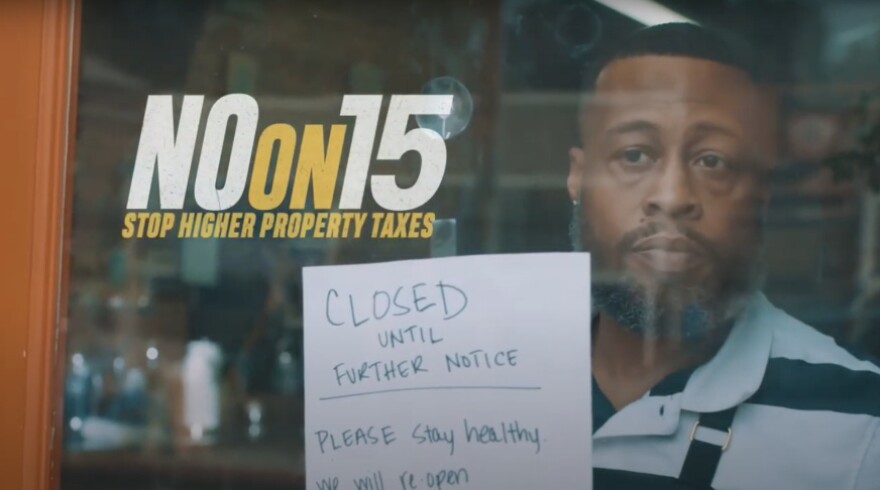Truth matters. Community matters. Your support makes both possible. LAist is one of the few places where news remains independent and free from political and corporate influence. Stand up for truth and for LAist. Make your year-end tax-deductible gift now.
California NAACP Opposes Measure To Raise Commercial Property Taxes To Benefit Schools

A measure on the November ballot aims to raise as much as $11.5 billion for schools and local governments in California by changing property tax rules for businesses.
Backers of Prop. 15 say it’ll help underfunded schools in disadvantaged communities. But some minority advocacy groups are opposing the measure, saying it could hurt small Black-owned businesses.
Using images of a Black-owned barbershop, a TV ad from the No On Prop. 15 campaign quotes the California chapter of the NAACP in saying the measure would hurt small business.
“As higher property taxes push our costs up, family businesses will go under,” the narrator says in the ad.
Campaign finance disclosures show that business groups, taxpayers associations and owners of large office buildings are leading the charge against Prop 15.
But groups such as the California NAACP and the California Black Chamber of Commerce have also come out against it, breaking with elected officials and education funding advocates who say Prop. 15 would benefit Black communities.
USC political science professor Ange-Marie Hancock Alfaro said one explanation for the split could be a generation gap between different constituencies.
“The NAACP in the state of California tends to represent older voters, who tend not to have children in public education right now,” she said.
(State and local chapters of the NAACP operate independently of the national organization.)
Prop. 15 exempts businesses with property worth $3 million or less. But opponents say small businesses could eventually be impacted if property owners respond to tax hikes by raising rents.
The measure would not affect property taxes paid by homeowners. It would create a so-called “split roll,” with one set of tax rules for residential properties and another for commercial and industrial properties.
However, the reform would dismantle aspects of Prop. 13, the landmark tax law passed by California voters more than 40 years ago. Prop. 13 is often called the “third rail” of California politics — and political experts say it’s a rail that could split voters in unexpected ways.







